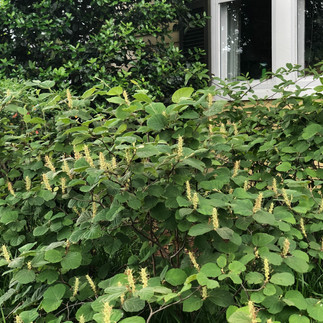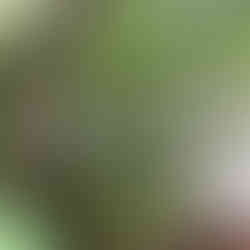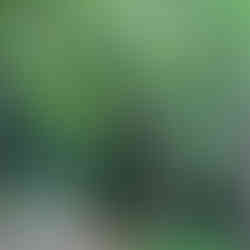Native Plant Garden Tour: Ellie's Garden
- Nuts for Natives
- Jun 23, 2021
- 4 min read
Updated: Sep 7, 2021
What does a native plant advocate and landscape architect do when she inherits an ornamental landscape?

If you remember the days when Adkins Arboretum's Native Plant Symposium and Plant Sale was the only native plant sale in town, the name Ellie Vernon may be familiar. Ellie led the development of Adkins Arboretum on the Eastern Shore from a passive 400 acre portion of Tuckahoe State Park to an independently managed and dynamic landscape destination highlighting the native flora and fauna of the Delmarva Peninsula. The annual Native Plant Sale and Symposium quickly became the place to go to buy native plants. The Symposium featured speakers like Rick Dark and Doug Tallamy before they emerged as rock stars of the eco-gardening world.
Fast forward, Ellie now an aspiring poet and writer, resides in Chestertown, Maryland in a circa 1910 house in the Town's historic district. The home sits to the front of a deep half acre lot running through the block. When Ellie moved in, the landscape was lovely - a transitional style composed of many non-native, ornamental plants. There were a few signs though that this garden could be hers, chief among them a stately willow oak (Quercas phellos) creating a graceful canopy for the front garden. Native oaks, we now know, support over five hundred species of caterpillars and more than any other species of tree in the Chesapeake watershed. The willow oak was a good sign and all Ellie needed to begin lending her creative eye and love of native plants to the garden. Recently, Ellie shared a few ideas we can all learn from.
Where to Start

Given the size of the garden, Ellie knew she would have to do a little bit at a time. Strategically, she started in the front where she, her family and visitors would pass by every day. The fences on either side were lined with yew (Taxus baccata) hedges. Ellie knew she wanted something more interesting for the walkway leading to the front door. She replaced one of the yew hedges with three multi-stemmed serviceberries (Amelanchier). These small trees create a charming approach to the home. Small white flowers grace the walkway in spring. As summer approaches, the branches drip with red berries. Stunning yellow color in fall enlivens the front garden. Since serviceberries are understory trees, their location beneath the big willow oak is not a problem. These trees also signal something special to visitors. It is definitely not your typical front walkway!
Foundation Plantings
Speaking of the front of the house, Ellie wanted as much garden interest as possible by the front door she uses every day. The usual evergreen foundation plantings, yews, Japanese hollies (Ilex crenata) and ornamental azaleas (Rhododendron) wouldn't do enough. She was looking for at least three seasons of interest by her front door. She chose inkberry (Ilex glabra) for winter color and berries and fothergilla (Fothergilla major) for flowers in spring and brilliant fall color, among others. This is something many of us can do. There are so many native shrubs with flowers, berries and fall color, we can easily have a changing scene at our front doors rather than something static. Just one benefit of this approach; you will be the first to know of spring's pending arrival by watching for buds on those deciduous shrubs.
Shrubs as Ground Cover
As I meandered through Ellie's garden on a recent cloudy day, I was struck by how she layered in numerous native shrubs right at the base of huge trees. They were essentially ground covers.

Here, a Virginia sweetspire (Itea virginica) anchors this bed beneath a swamp chestnut oak. The height of the shrubs seems so much more in scale to the large trees than perennials or ground covers ever would.

This Virginia sweetspire, for example, is planted directly beneath a horse chestnut tree.
Here, an American strawberry bush (Euonymus americanus) is planted beneath a dogwood (Cornus Florida) tree along the fence line. This shrub is deciduous and a bit gangly but once the small yellow pale flowers set seed, you see why gardeners find space for it. The pink and red seed pods are a sight to behold.

Native Hedging
As we walked, Ellie talked about the native hedge between her driveway and a neighbor's lot and I kept looking for it. She said it was right there. Indeed, it was a rectangular hedge of winterberry (Ilex verticillata). Ellie said shearing has had no effect. It still blooms and gets the bright red berries in winter. Brilliant idea and a good tip for those who prefer more formal landscapes.

Mixing Textures
The intriguing use of textures in Ellie's garden makes a see of green look both alive and restful. Ornamental hostas (Hosta) and liriope (Liriope muscari) layered with native golden ragwort (Packera aurea) and bowman's root (Gillenia trifoliata) look just right along side the path.

Mayapple (Podophyllum peltatum) in the fore add fantastic texture below sweet bay magnolia (Magnolia virginiana) with an ornamental euonymus (Euonymus fortunei) hedge behind, and all under the graceful canopy of a dogwood. This seems a quintessential example of layering.
Details
This garden has many touches that make it so interesting -- an array of fencing styles, each so well suited to its location, creative containers and artful paving from pebbles to brick to stone. The postal carrier even has her own pathway so she doesn't have to return to the street to reach the neighbor's house.

Planting a native trumpet honeysuckle vine (Lonicera sempervirens) is a detail most of us can add whether we garden in containers or on a half acre.
Lining the Driveway with Native Plant Powerhouses: Trees
The narrow drive is lined with white pines (Pinus strobus), river birches (Betula nigra) and a hemlock (Tsuga canadensis) or two. Anywhere you can add trees does your garden a world of good because of all the insect life they support. While these trees would be too much near the house, toward the back of the lot, they create a welcome canopy of shade.

Ellie's most recent addition is a new willow oak at the very back of the property. I feel like it is the exclamation point at the back of the garden. So fitting that the garden begins and ends with a willow oak!





























































Comments